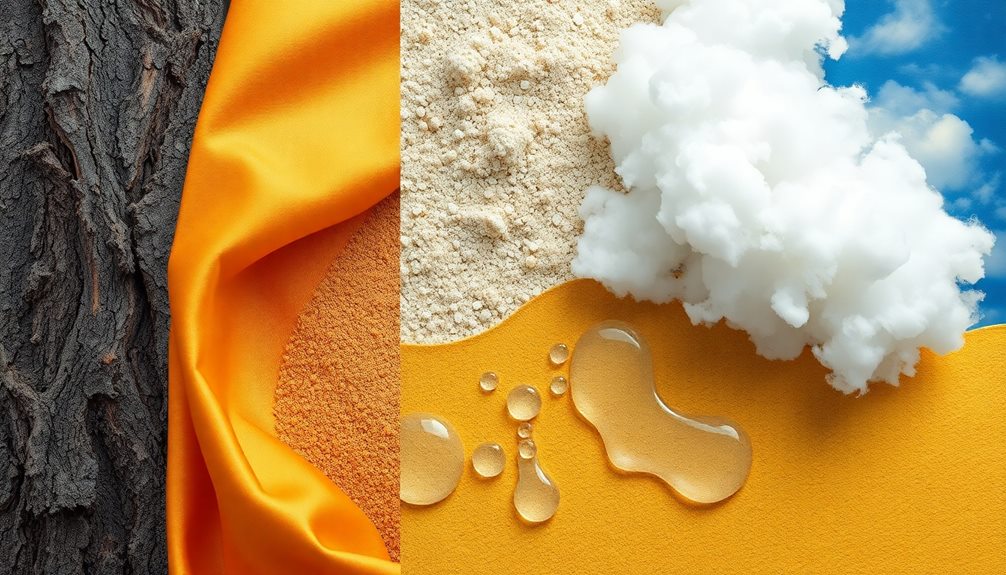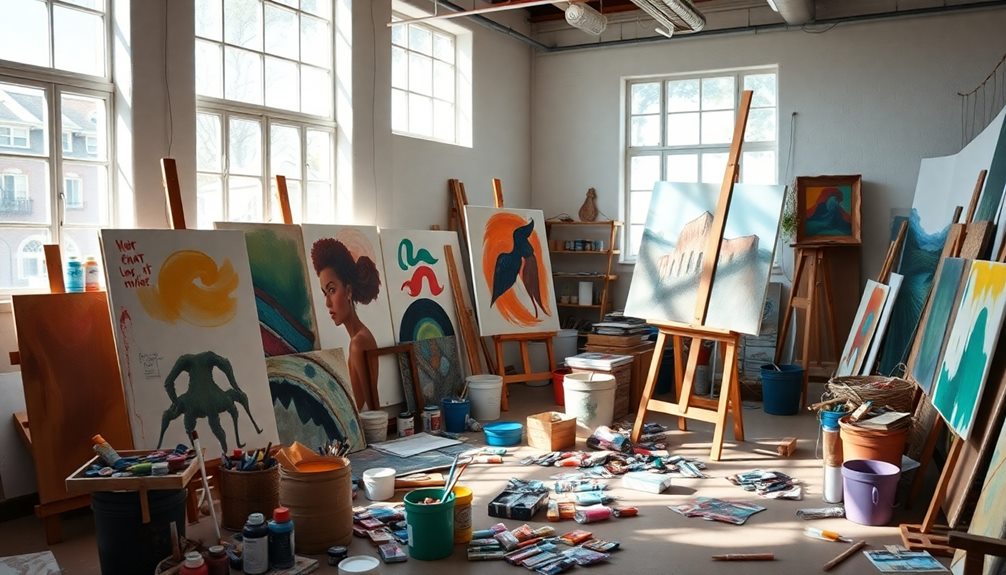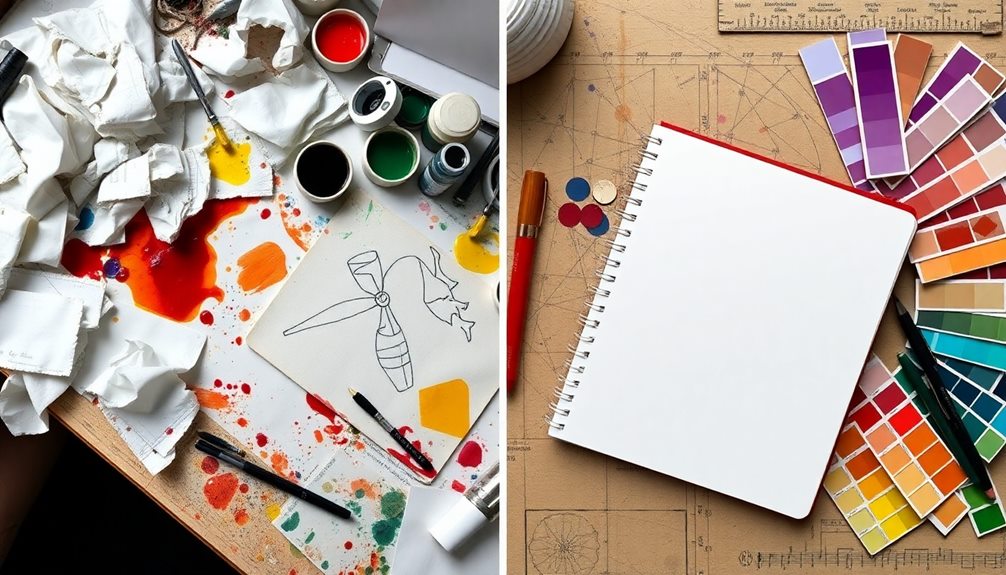To describe texture in writing, you need to engage your readers' senses effectively. Use specific and vivid adjectives that evoke tactile sensations, like "rough," "smooth," or "slimy." Incorporate multiple senses—sight, sound, touch, taste, and smell—to create a richer experience. Onomatopoeia can add life to textures, making them relatable. Experiment with different sentence structures to highlight the sensory elements. Avoid vague or overly complex descriptions that can confuse your audience. By mastering these techniques, you'll enhance immersion and emotional resonance in your narrative. Keep exploring to discover more ways to enrich your descriptions!
Key Takeaways
- Use specific adjectives to create vivid imagery and evoke sensory experiences in your writing.
- Engage at least three senses to enhance reader immersion and emotional connection.
- Incorporate onomatopoeia to bring textures to life and make descriptions relatable.
- Experiment with sentence structure to highlight sensory experiences effectively.
- Continuously refine your descriptive skills through feedback and practice for better storytelling.
Introduction
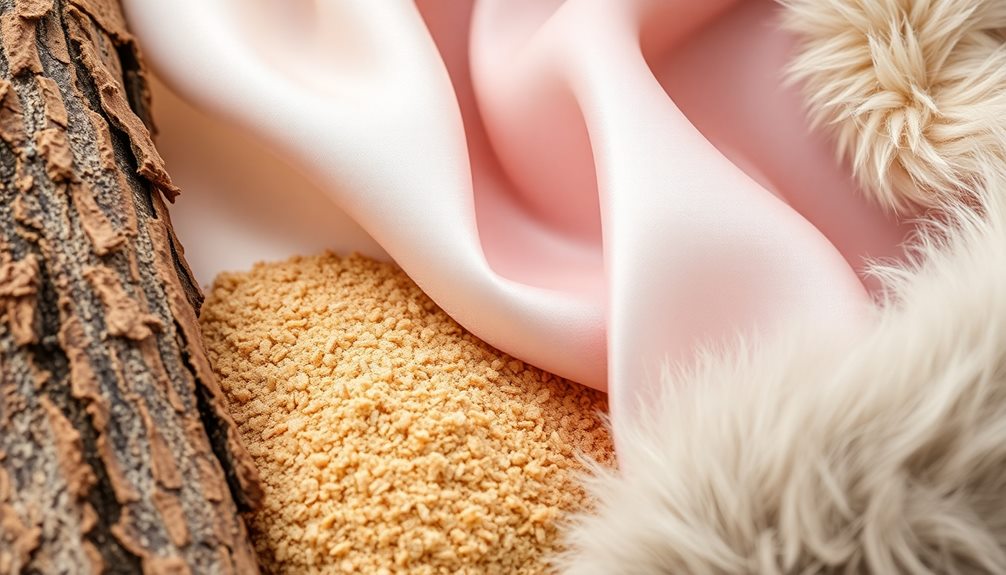
In today's fast-paced literary landscape, texture in writing plays a vital role in drawing readers into your narrative. By using precise texture adjectives, you can create a more immersive sensory experience that engages your audience on multiple levels. When you describe texture, think beyond just the visual aspects; consider how elements might feel, smell, or even sound. This holistic approach not only enhances your fiction writing but also helps your readers connect emotionally with the story. Incorporating texture into your writing is much like understanding composition in art—it requires a thoughtful arrangement of sensory details to create balance and evoke the desired response. By weaving tactile, auditory, or olfactory descriptions with intention, you can construct vivid scenes that resonate deeply with your audience. This multidimensional storytelling enriches your narrative, transforming it into an experience that lingers long after the final page.
To effectively describe texture, tap into the sensory triad by evoking three out of five senses in quick succession. This technique makes your descriptions more dynamic and relatable. Incorporating tactile sensations alongside vivid visual imagery allows readers to feel the world you're building, making it come alive in their minds.
Additionally, using onomatopoeia and contrasting sensory experiences can deepen your descriptions, allowing readers to experience textures in a visceral way.
Key Concepts and Definitions
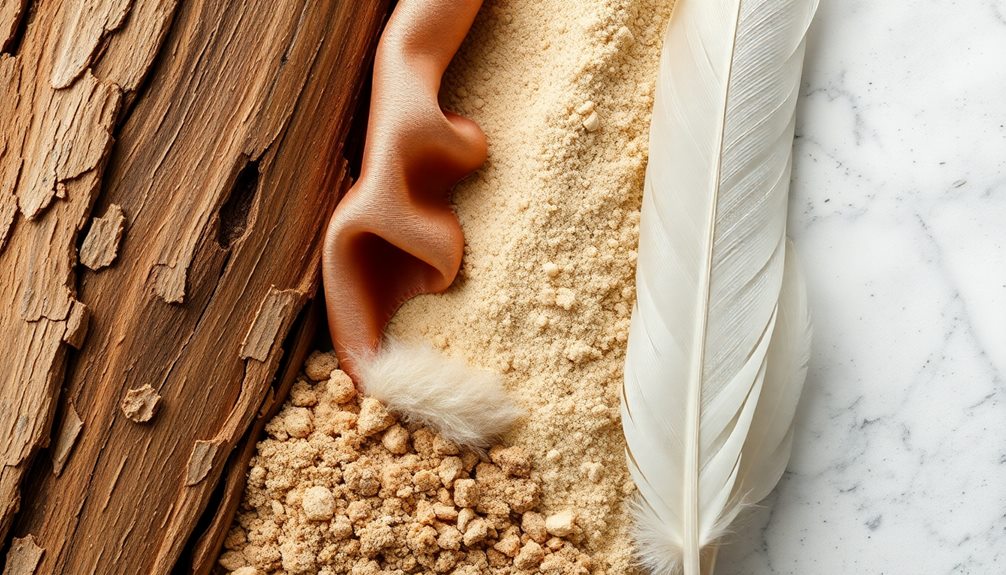
Understanding key concepts and definitions surrounding texture in writing can elevate your narrative craft. Texture refers to the sensory quality of objects or environments, combining tactile and visual elements to forge a vivid reader experience. When you describe texture, aim to engage multiple senses—ideally, at least three out of five (sight, sound, smell, taste, touch). This approach immerses your readers more deeply in your narrative.
To enhance your texture descriptions, utilize specific adjectives, often referred to as "gourmet words." Words like "silky," "gelatinous," or "briny" offer nuanced sensory details that paint a more compelling picture.
Additionally, the concept of texture is vital for world-building, shaping the atmosphere and emotional tone of your story.
Focus on contrasting sensory experiences to create depth and intrigue. Onomatopoeic words can add emotional weight, while carefully chosen descriptors can help you avoid clichés and maintain originality.
Textural Writing Techniques
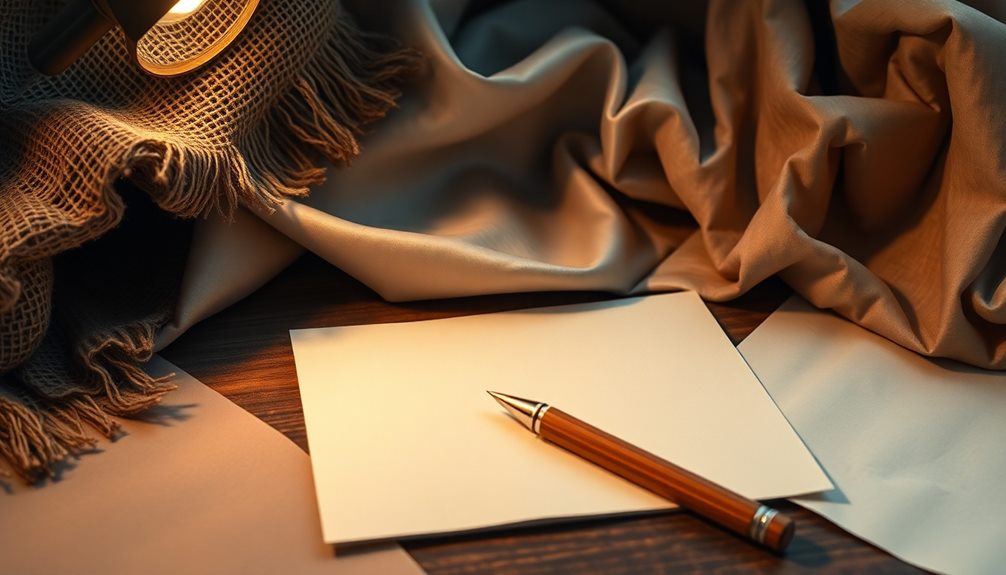
Mastering textural writing techniques can transform your narrative into a sensory adventure. To effectively describe things, start with specific adjectives—what you might call "gourmet words." Use terms like "scaly," "honeyed," or "gelatinous" to evoke vivid sensory experiences that draw readers in.
Just as the right projector can enhance visuals in a home cinema, precise descriptions can elevate your writing. For instance, consider the impact of color accuracy in storytelling, which can enhance the emotional depth of your narrative the role of color accuracy.
Engage the sensory triad by incorporating three out of five senses in quick succession, creating a richer atmosphere. For instance, instead of just saying something feels rough, you might describe it as "the jagged rock scraped against my palm, gritty and cold, while the salty breeze stung my skin." This approach adds depth and immerses your audience in the moment.
Don't shy away from onomatopoeia; words like "crunch" or "slither" can bring textures to life, making them relatable and dynamic. Leading with tactile sensations allows readers to visualize textures through touch, making the experience more tangible.
Real-World Writing Applications

Real-world writing applications of texture can significantly enhance your storytelling. By incorporating tactile sensations like the "coarse" feel of sandpaper or the "gelatinous" texture of a dessert, you help readers vividly imagine and experience the scene. This engagement can turn a simple description into a sensory adventure.
Utilizing a sensory triad—engaging three out of five senses—creates a richer narrative. When readers can hear, see, and feel the environment, they're more likely to immerse themselves in your story. Specific gourmet words, such as "herbaceous" or "marbled," elevate your texture descriptions, making them more evocative and memorable.
Experimenting with sentence structure can also draw attention to sensory experiences. Starting with texture descriptions can pique interest and prompt deeper engagement with your text.
Don't forget to engage with real-world textures through research or personal experience. Gathering authentic sensory details enriches your writing with genuine feel and atmosphere, allowing readers to connect on a deeper level.
Ultimately, integrating texture into your writing isn't just a stylistic choice; it's a powerful tool for evoking emotion and creating a compelling narrative.
Tips and Best Practices
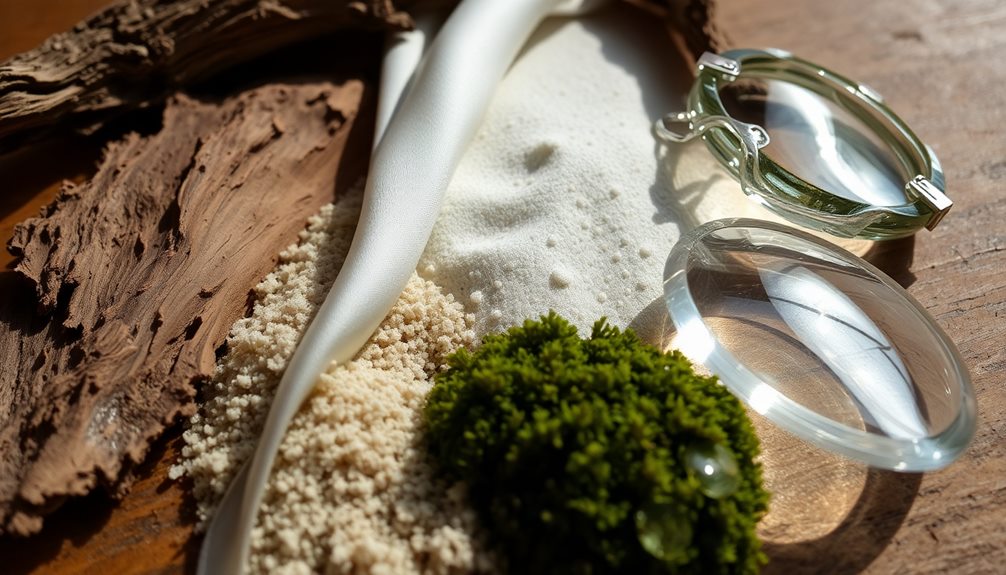
When crafting descriptions that resonate, focus on specific adjectives that evoke texture, like "silky" or "gritty." These gourmet words can transform ordinary scenes into vivid experiences, allowing readers to almost feel the texture through the page.
To create compelling sensory experiences, engage at least three out of five senses in quick succession. For instance, describe how a soft, warm blanket looks, sounds when it rustles, and smells like fresh linen. Additionally, consider incorporating textures related to nature, such as the rough bark of a tree or the smoothness of a pet's coat, which can evoke strong imagery and emotions in your writing. For example, the feel of a dog's fur can bring to mind warmth and companionship, making your descriptions even more relatable to readers interested in pet health.
Don't shy away from tactile sensations; consider how surfaces feel against skin. Mention the chill of a metal railing or the warmth of sun-kissed sand to draw readers in. Experiment with onomatopoeia, using words like "crunch" or "squish" to add emotional resonance and vividness, deepening the reader's connection to the texture.
Lastly, utilize contrasting sensory experiences to enhance your narrative. Transitioning from the smoothness of silk to the roughness of burlap can create a dynamic texture that keeps readers engaged.
Reader Engagement and Feedback
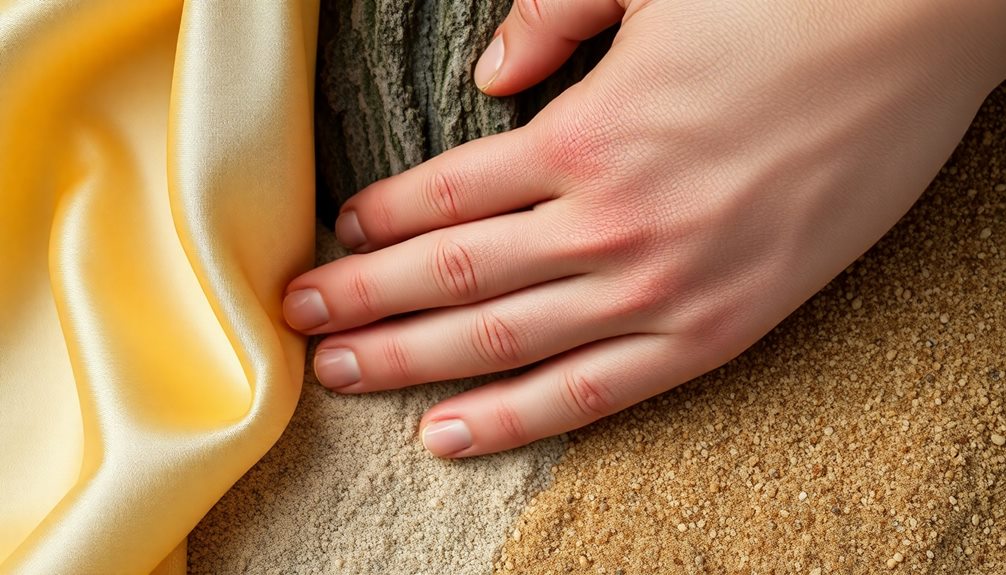
Engaging readers through textured descriptions isn't just about vivid imagery; it's about forging emotional connections that make narratives come alive. When you incorporate sensory descriptions, you invite readers to experience the world you've created on a deeper level. This enhanced reader engagement can evoke strong emotional responses, making your story more immersive and relatable.
Moreover, by embracing challenges and adaptability in your writing, you can explore new dimensions of texture that resonate with your audience continuous learning and skill development.
Seeking feedback from peers is crucial in refining your textured descriptions. Constructive criticism helps you understand how effectively your sensory details resonate with others. Engage with writing communities like Toasted Cheese, where you can share your work and receive valuable insights from fellow authors.
These interactions not only improve your writing but also foster a supportive environment where you can learn and grow. Regularly incorporating reader feedback into your revisions can transform your narrative into a more polished piece that resonates with a broader audience.
Don't underestimate the power of collaboration; it's through these exchanges that you can truly hone your craft. So, embrace the feedback, connect with your writing community, and watch your textured descriptions elevate your storytelling to new heights.
Reader Misinterpretation Risks
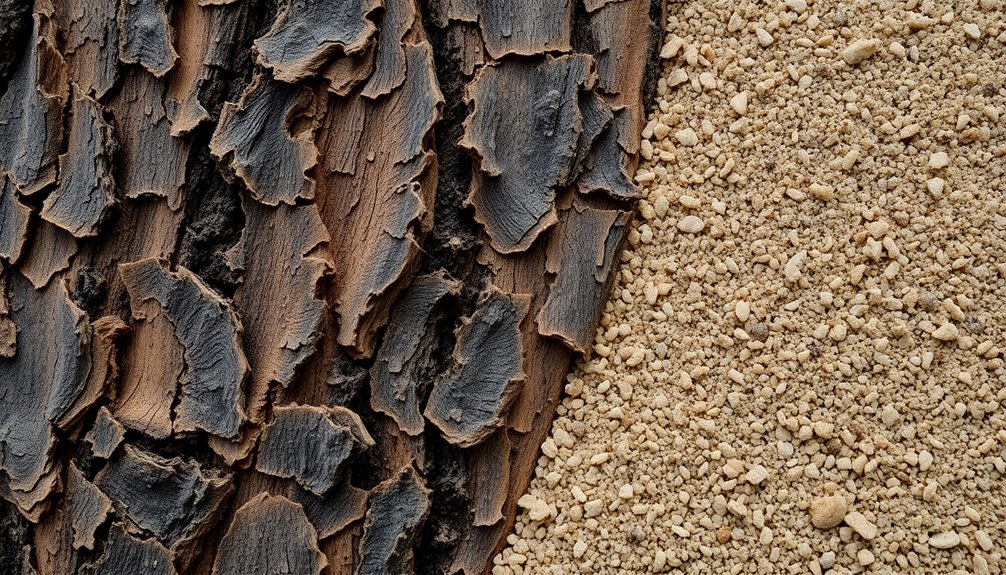
Navigating the delicate balance of texture in writing can be tricky, as reader misinterpretation often lurks around the corner. When your texture descriptions are vague or abstract, they can confuse readers about the sensory experiences you intend to convey. If you rely on complex or unfamiliar adjectives, you risk alienating your audience, making it tough for them to connect with the narrative.
Moreover, if sensory details aren't clearly linked to characters' emotions or actions, readers might struggle to grasp the significance of those textures in the story. Inconsistent texture descriptors can create cognitive dissonance, leading readers to doubt the reliability of your narrative and its world-building. This confusion can derail their engagement and enjoyment of your work.
Additionally, failing to balance sensory descriptions with clear visual cues can leave readers feeling either overwhelmed or underwhelmed. Without that balance, the immersive experience you're aiming for may fall flat.
To avoid these pitfalls, aim for clarity in your texture descriptions, ensuring they resonate emotionally and visually with your audience. By doing so, you'll enhance their understanding and enjoyment of your narrative.
Additional Resources

To enhance your writing and effectively convey texture, you can tap into a wealth of resources designed specifically for this purpose. One standout is "One Stop For Writers," which offers a Descriptive Thesaurus Database that significantly improves your vocabulary related to textures, colors, and shapes. With over 400 texture adjectives at your fingertips, you can craft vivid sensory descriptions that bring your narratives to life.
Additionally, consider exploring "The Writer's Lexicon" series, which provides valuable insights and prompts to inspire your creativity. These resources not only help you expand your vocabulary but also encourage you to think deeply about how texture influences your writing.
Angela Ackerman, co-founder of One Stop For Writers, is an experienced writing coach who offers educational resources and community support, ensuring you're never alone in your writing journey.
Regular updates to the platform mean you'll always have access to the latest tools for character development, setting descriptions, and plot structuring. Embrace these resources, and watch as your ability to describe texture transforms, enriching your storytelling and engaging your readers in new ways.
Frequently Asked Questions
How Do You Describe the Texture of Something?
To describe texture, you focus on specific adjectives that evoke sensations. Think about how it feels, sounds, or looks. Contrast various textures to create depth, and incorporate sensory details that catch the reader's imagination.
What Is an Example of a Word Describing Texture?
When you think of texture, consider words like "crunchy" or "silky." These adjectives vividly convey sensations, inviting readers to experience the tactile qualities of your subject, making your writing more engaging and immersive.
What Are the Words to Describe the Texture of Paper?
To describe paper texture, you can use words like smooth, rough, or toothy. Consider terms like glossy or matte for finishes, and mention weight, like lightweight or heavyweight, to convey its feel and sturdiness.
What Are Words to Describe Texture in Art?
When describing texture in art, you can use words like "rough," "smooth," "glossy," and "grainy." Consider how these terms evoke feelings or images, helping others to visualize and experience the artwork more deeply.
Conclusion
Incorporating texture into your writing can transform your reader's experience, making your descriptions more vivid and engaging. By using specific techniques and paying attention to sensory details, you create a world that readers can almost touch. Don't forget to seek feedback and refine your approach. With practice, you'll master the art of textural writing, allowing your words to resonate deeply. So go ahead, experiment with texture, and watch your writing come alive!
